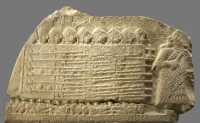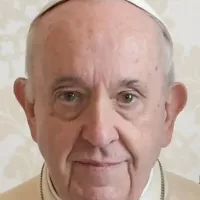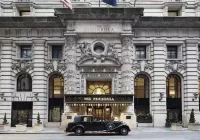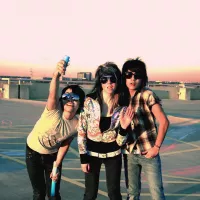Quito, officially San Francisco de Quito, serves as the capital and second-largest city of Ecuador. Its metropolitan area is home to approximately 2.8 million people. Functioning as the capital of the Pichincha province, Quito resides in a valley situated on the eastern slopes of Pichincha, which is an active stratovolcano within the Andes mountain range.
January 1912: Eloy Alfaro's Arrest and Lynching
On January 28, 1912, Eloy Alfaro was arrested and imprisoned after an unsuccessful attempt to return to power in Ecuador. He was subsequently lynched by a mob in Quito, and his body was burned in a city park.
1932: Outbreak of the Four Days' War
In 1932, the Four Days' War, a civil conflict, erupted following the election of Neptalí Bonifaz and the revelation that he held a Peruvian passport.
1939: Expropriation of La Carolina Farm
In 1939, the farm La Carolina was expropriated, marking the beginning of what would become the La Carolina park.
February 1949: Panic Following 'The War of the Worlds' Broadcast
On February 12, 1949, a realistic broadcast of H.G. Wells' novel "The War of the Worlds" caused citywide panic in Quito, leading to the deaths of over twenty people in fires set by mobs.
1956: Allen Graffham's Surface Collections
In 1956, geologist Allen Graffham made surface collections at the El Inga archeological site, sparking interest in Paleo-Indian remains.
1960: Archeological Excavations by Robert E. Bell
In 1960, American archeologist Robert E. Bell excavated the oldest traces of human presence in Quito on the slopes of the Ilaló volcano, finding obsidian tools dating back to 8000 BC.
1966: First mentions of plant life
In 1966 the area that is now Maquipucuna Reserve protects over 1966 species of plants, accounting for 10% of Ecuador's plant diversity.
1976: Construction of Virgin Mary Monument on El Panecillo
In 1976, the Spanish artist Agustín de la Herrán Matorras was commissioned to construct a 41-meter tall aluminum monument of the Virgin Mary, a replica of a sculpture by Bernardo de Legarda, on top of El Panecillo.
September 1978: Quito Declared a UNESCO World Heritage Site
On September 18, 1978, Quito, along with Kraków, Poland, was declared a World Heritage Site by UNESCO, recognizing its historic center.
1978: Quito's Historic Center Declared a UNESCO World Heritage Site
In 1978, Quito's historic center was designated as a UNESCO World Heritage Site during the organization's inaugural session dedicated to World Heritage.
1978: UNESCO Declares Quito a World Cultural Heritage Site
In 1978, Quito, along with Kraków, became one of the first sites declared as a World Cultural Heritage Site by UNESCO, recognizing its well-preserved historic center.
October 1999: Latest Eruption of Pichincha Volcano
On October 5, 1999, the latest eruption of the Pichincha volcano was recorded, with smoke and ash deposited on the city.
2001: Parishes Known as Cabildos
Since 2001, the urban parishes in Quito have also been known as cabildos.
November 2002: Reventador Volcano Eruption Affects Quito
In November 2002, an eruption of the Reventador volcano caused fine ash particles to fall on Quito, covering the city to a depth of several centimeters.
2002: Renewal of Quito's Historic Center Begins
Since 2002, the city of Quito has been undertaking a project to renew its historic center.
2003: Construction of Metrobus (Ecovia) lines begins
During 2003, the bus lines of the Metrobus (Ecovia) were constructed, traversing the city from the north to the south.
October 2004: Establishment of Guápulo Parish
In October 2004, the parish of Guápulo was established as a result of the political elections when the city was divided into 19 urban electoral parishes.
2004: Construction of Metrobus (Ecovia) lines continues
During 2004, the bus lines of the Metrobus (Ecovia) were constructed, traversing the city from the north to the south.
July 2005: Opening of the Telefériqo
Since July 2005, Quito has an aerial tramway known as the Telefériqo, which transports visitors from the city center to Cruz Loma.
2005: Maquipucuna Reserve Declared an Important Bird Area
In 2005, Maquipucuna Reserve was declared an IBA (Important Bird Area).
2006: Universities Founded Before 2006
According to the National Council for Higher Education of Ecuador (CONESUP), the following universities were founded in or around Quito before 2006.
2008: LDU Quito wins Copa Libertadores
In 2008, LDU Quito achieved a significant milestone by winning the Copa Libertadores, becoming the only club from Ecuador to achieve this feat.
2008: Quito Divided into 32 Urban Parishes
In 2008, the municipality of Quito divided the city into 32 urban parishes for administrative purposes.
2009: Quito's Economic Importance
As of 2009, Quito accounted for the largest contribution to the national GDP and the highest per capita income in Ecuador. It also had the highest level of tax collection in the country, exceeding 57% per year.
July 2010: Start of Pressure Recording Period
From July 1, 2010, a period began during which the lowest recorded pressure was 998.2 hPa and the highest was 1,015.2 hPa, lasting until June 2011.
2010: Opening of Museo de Sitio La Florida
In 2010, the Museo de Sitio La Florida opened to the public to preserve artifacts from the tombs and explain the complex culture of the Quitu people.
June 2011: End of Pressure Recording Period
Until June 30, 2011 the lowest recorded pressure was 998.2 hPa and the highest was 1,015.2 hPa, starting in July 2010.
2011: Quito's Population Reaches 2,239,191
In 2011, the population of Quito was recorded to be 2,239,191 people.
August 2012: Establishment of Bici Q
In August 2012, the Municipality of Quito government established a municipal bicycle sharing system called Bici Q.
2012: Construction of First Metro Line
In 2012, construction began on the first metro line (subway) in Quito.
February 2013: Closure of Old Airport and Opening of New Airport
In February 2013, specifically on the 19th, the old airport in Quito was closed, and on the 20th, the new Mariscal Sucre International Airport opened to air traffic.
February 2013: New Mariscal Sucre International Airport Begins Operations
On February 20, 2013, the Mariscal Sucre International Airport began operations, replacing the old airport, which was later converted into a metropolitan park.
April 2013: Inauguration of Parque Bicentenario
On April 27, 2013, Parque Bicentenario was inaugurated on the site of the Old Mariscal Sucre International Airport, featuring recreational spaces, play structures, exercise equipment, a pond, and cultural exhibits.
2013: Maquipucuna Reserve Declared a Conservation Corridor
In 2013, Maquipucuna Reserve was declared the core of the conservation corridor for the spectacled bear.
2013: Construction of Quito Metro Begins
In 2013, construction began on the 23 km metro subway system (Quito Metro) with Phase One, which entailed the construction of stations at La Magdalena and El Labrador.
2015: U.S. Department of State on Petty Theft in Quito
In 2015, the U.S. Department of State reported that petty theft, including pickpocketing, purse snatching, robbery, bag slashing, and hotel room theft, was the most common crime issue facing tourists in Quito.
2016: Phase Two of Quito Metro Construction Begins
In 2016, Phase Two of the Quito Metro construction began, involving 15 stations, a depot, and sub-systems.
2019: Independiente del Valle wins CONMEBOL Sudamericana
In 2019, Independiente del Valle won the CONMEBOL Sudamericana.
2022: Independiente del Valle wins CONMEBOL Sudamericana again
In 2022, Independiente del Valle secured their second CONMEBOL Sudamericana title.
March 2023: Establishment of New Bicycle Sharing System
In March 2023, a new bicycle sharing system was established in Quito to promote bicycles as a sustainable and healthy mode of transport.
December 2023: Quito Metro Begins Operations
In December 2023, the first metro line (subway) in Quito started operating, integrating with the existing public transportation network.
December 2023: Opening of Quito's Subway System
On December 1, 2023, Quito's new subway system opened with one line.
December 2023: Opening of the Quito Metro Line
On December 1, 2023, the 23km Quito Metro line opened, after construction began in 2013.
2023: Independiente del Valle wins Recopa Sudamericana
In 2023, Independiente del Valle added to their list of achievements by winning the Recopa Sudamericana.
Mentioned in this timeline
Florida a state in the Southeastern United States is largely...

War is defined as an armed conflict involving the organized...

Bears are carnivoran mammals belonging to the Ursidae family classified...
Poland officially the Republic of Poland is a Central European...

The Pope is the Bishop of Rome and the head...

A hotel is a commercial establishment offering short-term paid lodging...
Trending
8 months ago Maldives bans Israelis in solidarity with Palestinians amid Gaza conflict escalation.

3 months ago Brock Bowers' Injury Concerns: Raiders' Crosby Also Added to Injury Report

2 months ago Edison Upgrades South Pasadena Electrical Grid Amidst Storm Recovery, Lifting Evacuation Orders

John Stamos is an American actor and musician who rose to fame as Blackie Parrish on General Hospital earning a...

8 months ago Austin Hays emerges as a top Fantasy Baseball Waiver Wire pickup.

1 month ago Maxxine Dupri, assisted by AJ Lee, dethrones Becky Lynch for Intercontinental Title on Raw!
Popular

Tucker Carlson is an American conservative political commentator known for...

XXXTentacion born Jahseh Dwayne Ricardo Onfroy was a controversial yet...

Ben Shapiro is a prominent American conservative political commentator media...

Candace Owens is an American conservative political commentator and author...

William Franklin Graham III commonly known as Franklin Graham is...

Ursula Gertrud von der Leyen is a prominent German politician...
